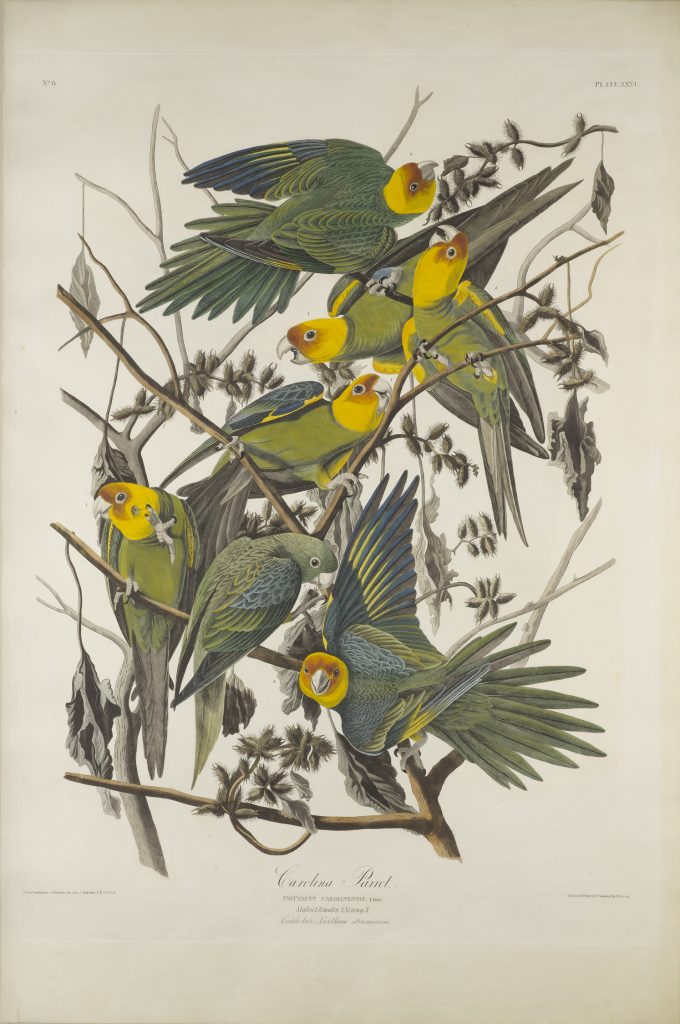The Birds of America, Plate #26: "Carolina Parrot" (work of art)
Artwork Info
Key Ideas
- This print depicts the Carolina Parrot (now known as the Carolina Parakeet), an extinct species of neotropical parrot. The Carolina Parrot was native to the Eastern, Midwest, and Plains states of the United States.
- This large-scale print was created by John James Audubon, for The Birds of America book series. The pages of the book are more than three feet tall and just over two feet wide.
- Audubon’s prints feature detailed illustrations of more than 400 North American bird species in their natural habitats. He sketched living birds that he observed in nature as well as dead birds that he posed with wire.
Learn More
The Carolina Parrot, or Parakeet, is a now-extinct species of neotropical parrot. These birds were native to the Eastern, Midwest, and Plains states of the United States of America. They lived in old-growth wetland forests along rivers and in swamps. This print depicts a group of Carolina Parrots, including male and female birds of various ages. The youngest parakeet can be identified by its different colors. Two birds are shown spreading their wings and tail feathers, revealing otherwise hidden patterns. This species mostly ate seeds, fruit, and grains. Their population declined over time due to deforestation and hunting. The last captive Carolina Parakeet died at the Cincinnati Zoo in 1918. The species was declared extinct in 1939.
John James Audubon was an artist who studied birds and the natural world. His combined interests led him to create a series of books titled The Birds of America. The books feature detailed illustrations of North American bird species in their natural habitats. This hand-colored print of the Carolina Parrot is included in The Birds of America.
Audubon spent 20 years working on The Birds of America project. He explored the American wilderness, observing and sketching 435 different birds in their natural habitats. Audubon also drew birds from posed specimens. He developed a technique of wiring recently killed birds into natural-looking poses. In order to depict life-size birds, Audubon used a large-scale book format known as a double elephant folio. The first editions of The Birds of America books measure more than three feet tall and more than two feet wide.
The plate number in the title (#26) refers to the number etched into the copper engraving plate that was used to create the print. A London-based engraver named Robert Havell and his son translated each of Audubon’s 435 watercolor studies into detailed engravings. The original copper plates were used to produce black and white images. A team of colorists (people who add color to black-and-white line art) colored the prints by hand. Each plate was numbered and corresponded to a specific bird.
tags: environment, naturalism, animals, change, investigation
Additional Resources
Resources for Teachers
- Read an article about the Carolina Parrot from the National Audubon Society website.
- Visit a web page to explore The Birds of America book series.
- Explore Audubon bird-themed classroom activities for young students.
Resources for Students
- Explore Audubon Adventures for young nature lovers, including puzzles, quizzes, and more.
- Visit a web page to learn more about Audubon’s life and work.
- View Audubon’s illustrations of other birds featured in The Birds of America.

